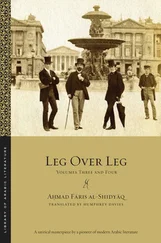“a name that embraces the precious metals such as silver, iron [sic], and others”
and hayṣam .
“a kind of stones, smooth”
Next, the finishing touch to this noble place are withāb stuffed with ʿushar and ḥuraymilāt ( withāb are “beds and bedding,” ʿushar is “a plant used as a stuffing for pillows and from whose flowers and twigs sugar is extracted,” and ḥuraymilāt are trees “whose pericarps open to reveal the softest cotton, with which the pillows of kings are stuffed”), though I have committed a grave error here in keeping mention of bedding to the end, the latter being the first thing to enter a woman’s mind when she arrives in a country. The furnishings for the house are now amassed (and you’re still worrying about the ass ).
2.16.39
W
ORK
G
ROUP
5: F
OR THE
M
AKING OF
C
LOTHES
The thurqubiyyah ,
“White garments made from the linen of Egypt”
the jilbāb ,
“the shirt, or a wide garment for a woman”
the sakb ,
“a certain garment”
silāb ,
“black garments”
qaṣab ,
“soft garments of linen”
the labībah ,
“a garment like the baqīrah ”
the nuqbah ,
“a garment like the izār ”
the biẓmāj ,
“any garment one of whose ends is of velvet, or whose middle is of velvet and whose two ends are of a different weave”
the muʿarrajah ,
“[a garment] with a wavy stripe”
the mawthūjah ,
“loosely spun and woven garments”
2.16.40
habraj ,
“embroidered garments”
the mutarraḥah ,
“ mutarraḥ garments are garments that have been well steeped in dye”
wajiḥ ,
“tightly woven garments”
the khawkhah ,
“a kind of garment, green”
walīkh ,
“garments of linen”
the thafāfīd ,
“a kind of garment”
the jimād ,
“a kind of garment”
the muʿaḍḍadah ,
“the muʿaḍḍad are certain garments with a mark on the upper arm”
the firind ,
“a garment, too well known to require definition”
the muqarmadah ,
“a garment that is muqarmad is coated with a substance like saffron”
2.16.41
the mujassadah ,
“[a garment] dyed with saffron”
the maqadiyyah ,
“a garment, too well known to require definition”
the hurdiyyah ,
“[a garment] dyed with hurd roots”
the lādhah ,
“a garment of Chinese silk”
the buqṭuriyyah ,
“a certain wide, white garment”
the ḥaṣīr ,
“an embroidered, decorated garment that, spread out, is so beautiful that it captures the heart”
the khusrawāniyyah ,
“a kind of garment”
the dithār ,
“any item of apparel worn over the shiʿār ” 629
the sābiriyyah ,
“a delicate, high-quality garment”
the musayyarah ,
“a striped garment”
2.16.42
the ṣudrah ,
“a certain garment, too well known to require definition” [“waistcoat”]
the ṣidār ,
“a certain garment whose upper part is like a women’s head scarf and whose lower part covers the breast”
the ʿabqariyyah ,
“ʿAbqar is a town whose clothes are extremely attractive”
the miʿjar ,
“a certain item of apparel that a woman winds around her head and over which she then dons her jilbāb , or a Yemeni garment”
the ʿushāriyyah ,
“a certain garment ten cubits in length”
the ʿuqār ,
“a kind of garment, red”
the qubṭuriyyah ,
“a certain white linen garment”
marmar ,
“a style of tailoring women’s clothes”
munayyarah ,
“[cloth] that is woven on two looms”
bāghiziyyah ,
“garments of silk-wool, or resembling silk”
2.16.43
the tawwaziyyah ,
“eponymous” [from Tawwaz, in Persia]
the mumarʿazah ,
“ mirʿizzā is the downy fur that is under a goat’s hair”
the muṭarrazah ,
a garment with decorated borders
the mafrūzah ,
“a garment that is mafrūz has marks like fingerprints”
the qirmiziyyah ,
“a garment dyed with cochineal”
the qahz ,
“garments of red wool resembling the mirʿizzā and sometimes mixed with silk”
the tinnīsiyyah ,
“Tinnīs is a town from which fine garments are said to come”
the mudamqasah ,
“ dimqis is loosely woven cloth, or raw silk, or silk brocade, or linen”
the qassiyyah ,
“from eponymous Qass, an area of Egypt”
kirbās ,
“garments of white cotton”
2.16.44
the mulaslasah ,
“a garment that is embroidered and striped”
the narsiyyah ,
“[from] Nars, a village in Iraq”
the muwarrasah ,
“any garment dyed with Indian yellow”
akyāsh ,
“fabrics that are re-spun, such as silk-wool and wool”
mājushūn ,
“dyed garments”
the muqaffaṣah ,
“a garment with stripes in the shape of a cage”
the muḥarraḍah ,
“a garment dyed with safflower grains”
the ʿarḍī ,
“a class of garment”
the miʿraḍ ,
“a garment in which a girl is displayed”
the rayṭah ,
“any piece of cloth that is not sewn to another but is all of one weaving and one piece, or any fine, soft garment”
2.16.45
sijillāṭ ,
“linen garments embroidered with ornamentations that look like rings”
the sumṭ ,
“a certain garment of wool; spelled simṭ it means an unlined garment, or a ṭaylasān (‘net shawl’)”
muqaṭṭaʿāt ,
“short garments… or embroidered wraps”
the muraddaʿah ,
“[a garment] on which are traces of perfume”
the ṣadīʿ ,
“a certain garment worn beneath a coat of mail”
the muḍallaʿah ,
“a striped musayyarah , or one whose ornamentation takes the form of ribs”
the niṣʿ ,
“a certain white garment”
the muwashshaʿah ,
“a garment with decorated borders”
the shurāfī ,
“a certain white garment”
2.16.46
the shaff ,
“also shiff : a delicate garment”
the bunduqiyyah ,
“a certain garment of fine linen”
the muḥaqqaqah ,
“any tightly woven garment”
khuzrāniq ,
“white garments”
the dabīqiyyah ,
“Dabīq is a town in Egypt”
the ritāq ,
“two garments whose edges have been sewn together”
rāziqiyyah ,
“white linen garments”
the muzabraqah ,
[a garment] dyed red or yellow
the ʿilqah ,
“a certain sleeveless garment… or a precious garment”
Читать дальше












